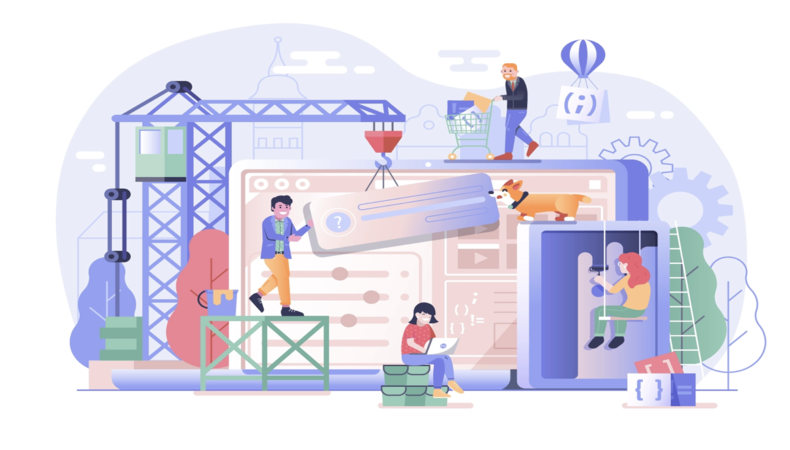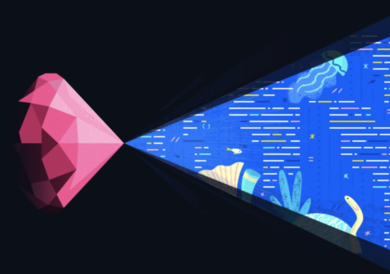
Good software complies with requirements, satisfies customer expectations, changes in response to disruption, stays easy to grasp, and analyzes data to solve the real problem. Don’t you agree? And now, we’re moving to the next question — how to develop such a software product? Though there are a few software development life cycle model types, we’d like to get you acquainted with the two major ones - Agile and Waterfall - showing the two proven paths taken by Patternica.
Why these two SDLC models? In 2021, they formed 54.8% of the total, as the global system development life cycle types practised by software engineers to create high-quality products. Hope you share our reasoning, and it’s time to discuss which SDLC model is the best for your project.
What is a Software Development Lifecycle?
Let’s start small. Before going deeper, you should clearly understand the concept of SDLC. The model of SDLC is the well-thought schema of organizing the full development life cycle with the care of qualitative results (deliverables) and ongoing product improvement. In other words, any SDLC methodology aims at creating a software product in compliance with goals and requirements.
As a result of following the structured plan, the Development Team goes through the project realization, while Project Managers control the course of action and guide the team toward the common goal. Thanks to it, the client gets what he has ordered, and users can ease up their lives with the service that appeared on the market.
How does the SDLC work?
Now that you know what are SDLC models, we’re ready to go into the details of how they function. To put it simply, the models of SDLC serve the developers’ guidelines in the process of software building. Their “whys,” “whats,” and “hows” of the project. The latter, usually, is divided into 6-7 phases (*7 is optional):
- Discovery = requirements + business goals. At this initial stage, the team is coming to an understanding of what particularly they’re going to build. In the measurable artifacts, this understanding reflects in the roadmap of the project.
- Estimation = planning + risk management. This phase is characterized by the thorough documentation of the product description, its core and additional features, quality attributes and expected behavior, and limitations, of course. Literally, it lays the basis for creating the Software Requirement Specification.
- Architecture design. The idea is to transform the software specs into the Product Design Specification. What’s the difference? That’s already a “how” answer to the previous “what.” Usually, this document mentions the success criteria and the tools to use while building the interface, inner logic, dependency, etc.
- Implementation = development. This stage is the heart of the software development life cycle, which presupposes the very writing of the code lines. It also involves UI designing, environment set-up, and work with databases. In the end, the team manages to build the functional software item.
- Testing. Though many underestimate the importance of functional and non-functional testing, this phrase is significant to compare the ultimate result with the wanted one. Reducing bugs is an important step to guarantee the app’s smooth performance after the release. So, at this point, you’ll see the deployment-ready application.
- Deployment = final checkup. After the QAs have done their job, the product goes through the final preparation before going live. The actual users start trying the software and share their feedback you can learn from.
- Support & maintenance. It’s an optional but highly desired phase, at which the tech team continues supporting the released product and coping with updates if necessary.
Any questions so far? If not, let’s dive into the major types of SDLC models with gusto!
Get familiar with the SDLC model types
As we’ve already mentioned, while DevOps is rapidly gaining more popularity in the engineering circles, Agile and Waterfall SDLC types still remain the kings of the development methodology. The rest of the SDLC methods you may come across, such as iterative, spiral, or V-shaped SDLC model, are either Agile or Waterfall branches, or their merge.
Thus, we prefer to stop on these two pillars of the software development lifecycle in more detail, and this can be perfectly done through the comparison table.
Pave your way to successful product building with Patternica
In our software development practice, we most often refer to the Agile methodology of SDLC as it gives our client what he’s supposed to get - customer satisfaction - which is usually translated into the voluntary subscriptions/downloads/installs of the product and high revenue rate. Contact us to implement a suitable methodology in SDLC for your successful project realization!


.png)